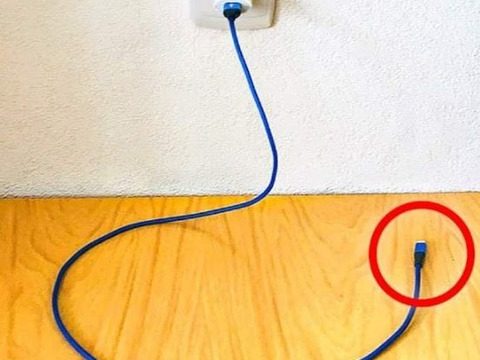15 Common Prison Tattoos and Their Meanings
Navigating the prison environment is complex, and maintaining the safety of both inmates and staff is critical. One key to understanding the prison system is recognizing the visual markers that inmates use to communicate their affiliations, beliefs, or even their criminal history. Tattoos, in particular, play a significant role in this coded communication.

For correctional officers, decoding these tattoos is essential to enhance awareness and keep the environment secure. Let’s explore 15 common prison tattoos and their meanings, offering insight into the complex language of prison culture.
1. The 1488 Tattoo: Symbol of White Supremacy
The “1488” tattoo is often seen on white supremacist inmates. The number “14” refers to a slogan by Nazi leader David Lane, while “88” represents “Heil Hitler.” Recognizing this tattoo is important for identifying individuals with extremist racial ideologies.
2. The Cobweb: Sign of Long-Term Incarceration
A cobweb tattoo, typically found on the elbow, signifies a long prison sentence. It symbolizes being trapped in the prison system, much like a spider’s prey caught in its web.
3. The Teardrop: Mark of Violence or Loss
The teardrop tattoo is one of the most recognizable prison tattoos and can have various meanings. It may indicate a long sentence, involvement in violence, or mourning the loss of a friend or fellow inmate.
4. The Five-Point Crown: Gang Affiliation
The five-point crown tattoo represents loyalty to the Latin Kings, one of the largest Hispanic gangs in the U.S. It’s often seen alongside the acronym ALKN, which stands for Almighty Latin King Nation, signifying gang affiliation.
5. The Three Dots: “Mi Vida Loca”
The three dots tattoo symbolizes a life of chaos or unpredictability, often associated with the phrase “mi vida loca” (my crazy life). It’s a marker of the gangster lifestyle, though not tied to a specific gang.
6. The Clock With No Hands: Symbol of Incarceration
A clock with no hands represents the endless nature of prison time. It’s worn by inmates serving long or life sentences, symbolizing lost time and the futility of counting days.
7. Aryan Brotherhood Tattoos: Symbols of Hate
Aryan Brotherhood tattoos, such as swastikas or SS lightning bolts, indicate membership in this violent white supremacist gang. Recognizing these symbols is critical as they often point to highly organized and dangerous individuals.
8. Norteño Tattoos: Northern California Gang Affiliation
Norteño tattoos represent loyalty to the Nuestra Familia gang, a dominant force among Northern California Hispanic gangs. Recognizing this symbol helps identify gang affiliations and potential conflicts within the prison system.
9. La Eme Tattoos: Mexican Mafia Symbols
La Eme, or the Mexican Mafia, is one of the most powerful criminal organizations in the U.S. Tattoos bearing the letter “M” or symbols linked to La Eme indicate strong ties to this influential group.
10. MS 13 Tattoos: Notorious Gang Mark
MS 13 tattoos signify membership in one of the most violent gangs in the world, originally from El Salvador. This gang is known for its brutality, and the tattoos often reflect their violent reputation.
11. Playing Cards: Gambling and Risk-Taking
Playing card tattoos suggest a connection to gambling, but they also represent a willingness to take risks, a common trait in the criminal underworld.
12. EWMN: Symbol of Aggression
EWMN stands for “Evil, Wicked, Mean, Nasty,” and it’s often tattooed on an inmate’s knuckles. This tattoo signals an aggressive and confrontational attitude.
13. Cross on the Chest: Symbol of Criminal Authority
In Russian prisons, a cross on the chest signifies a high-ranking criminal, often referred to as a “Prince of Thieves.” It’s a symbol of authority within the prison hierarchy.
14. A.C.A.B.: Anti-Police Sentiment
A.C.A.B. stands for “All Cops Are Bastards,” and it’s often seen on British inmates. This tattoo showcases strong anti-authority sentiment and a rejection of law enforcement.
15. The Five Dots: Time Behind Bars
The five-dot tattoo, or quincunx, represents time spent in prison. The four dots symbolize the prison walls, while the dot in the center represents the inmate.





